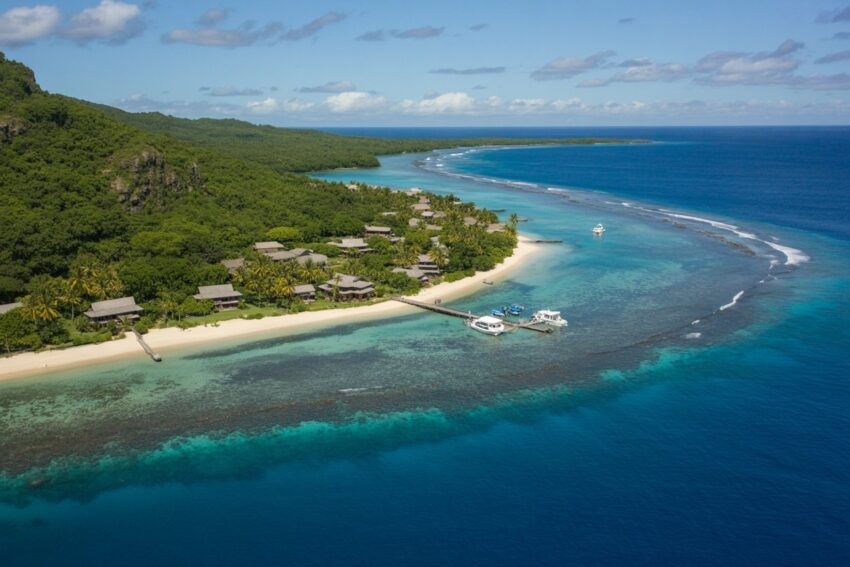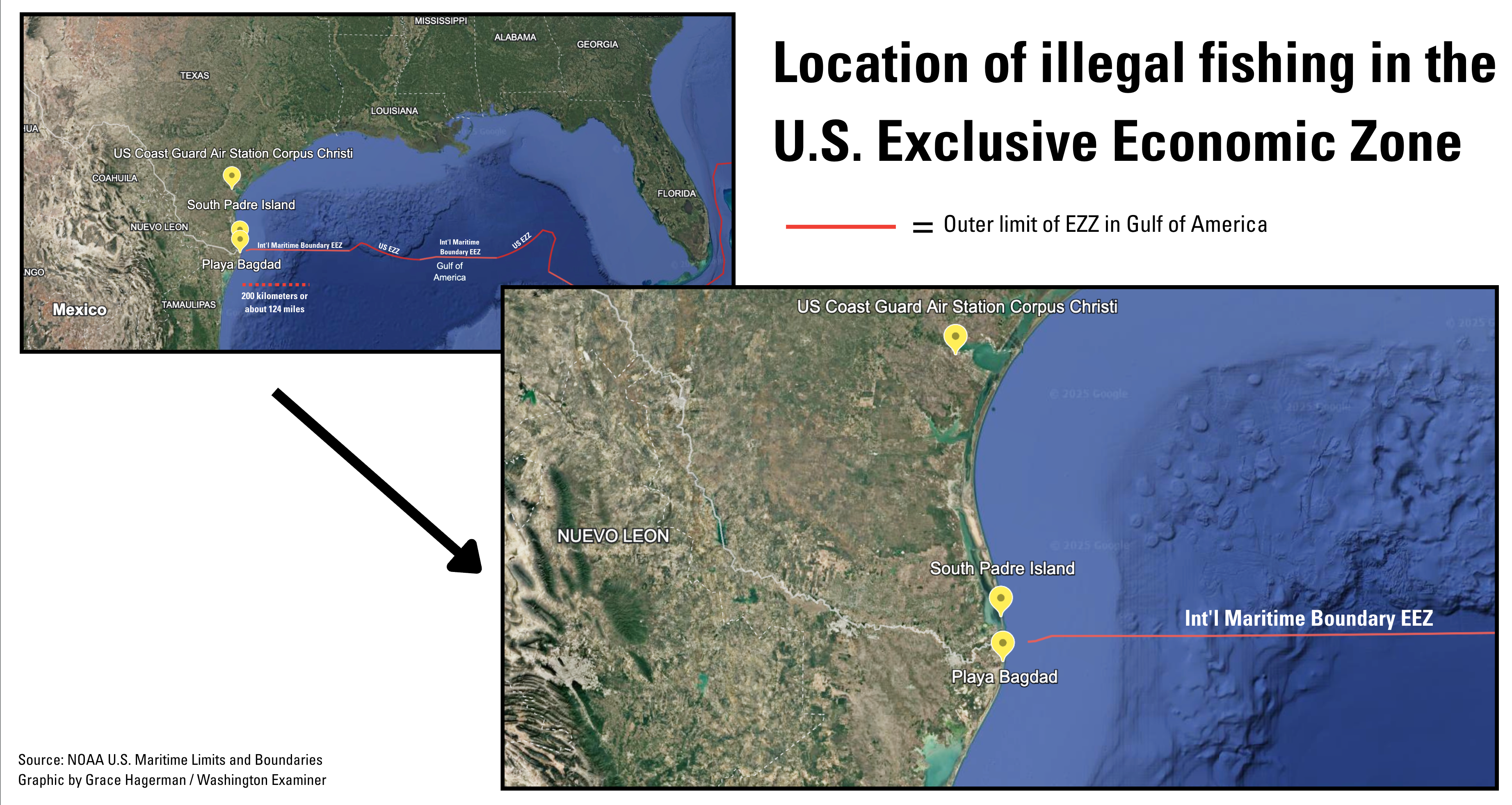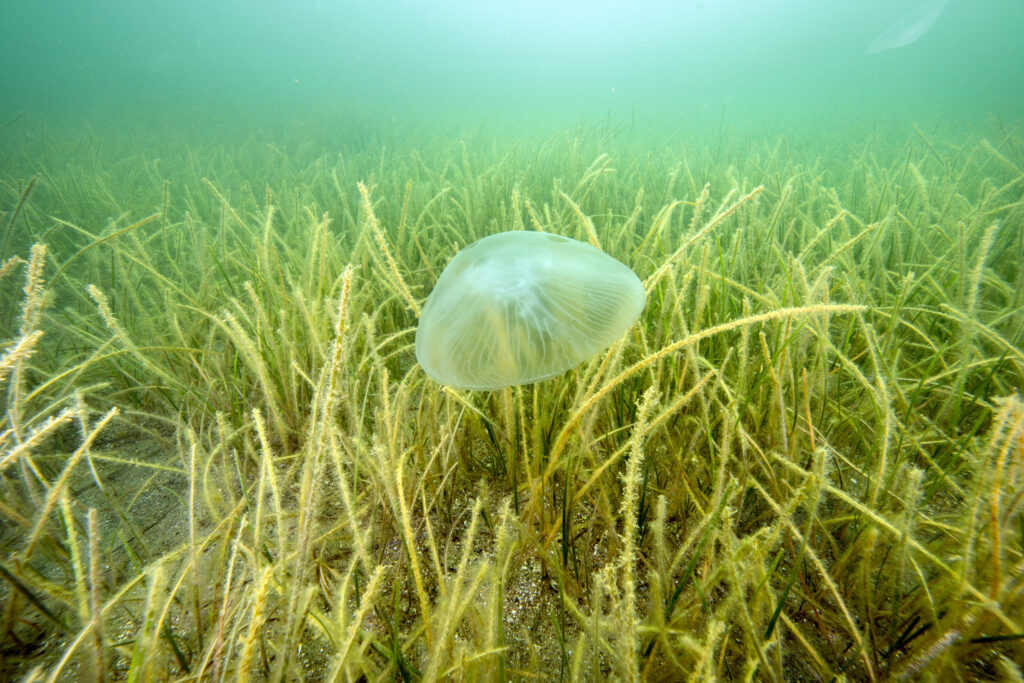Report on Marine Conservation Efforts in the Global Hospitality Sector
A growing trend within the luxury travel industry involves the integration of environmental stewardship with high-end tourism. This report analyzes a selection of global resorts that are actively contributing to marine conservation, aligning their operations with the United Nations Sustainable Development Goals (SDGs). These establishments demonstrate a commitment to protecting marine ecosystems, primarily addressing SDG 14 (Life Below Water), while also contributing to SDG 13 (Climate Action), SDG 12 (Responsible Consumption and Production), and SDG 17 (Partnerships for the Goals). The following case studies illustrate how the private sector can effectively support the 2030 Agenda for Sustainable Development through targeted environmental initiatives and sustainable operational practices.
Analysis of Leading Marine Conservation Resorts
-
Kokomo Private Island, Fiji
Located within the Great Astrolabe Reef, Kokomo Private Island has implemented a comprehensive conservation strategy. Its initiatives directly support the sustainable management and protection of marine and coastal ecosystems, a key target of SDG 14.2. The resort actively involves guests in its conservation work, promoting education and responsible tourism.
- Coral Restoration: Over 9,000 heat-resilient corals have been transplanted since 2018, a direct action to combat climate change impacts on marine life, aligning with SDG 13 and SDG 14.2.
- Mangrove Reforestation: Collaboration with local communities to restore mangrove forests enhances coastal protection and biodiversity, supporting SDG 11 (Sustainable Cities and Communities) and SDG 15 (Life on Land).
- Marine Life Monitoring: A partnership with Manta Project Fiji exemplifies SDG 17 (Partnerships for the Goals), utilizing research to inform conservation strategies for vulnerable species under SDG 14.
-
The Brando, French Polynesia
The Brando operates as a model for sustainable luxury, demonstrating that opulence can coexist with ecological responsibility. Through its partnership with the Tetiaroa Society (SDG 17), the resort functions as a hub for scientific research and conservation, contributing to multiple SDGs.
- Sustainable Infrastructure: The use of Sea Water Air Conditioning (SWAC) significantly reduces energy consumption, supporting SDG 7 (Affordable and Clean Energy) and SDG 9 (Industry, Innovation and Infrastructure).
- Environmental Education: The resort offers educational tours that raise awareness of sustainability, contributing to SDG 4 (Quality Education) and SDG 12 (Responsible Consumption and Production).
- Climate Action Initiatives: Collaboration with the Blue Climate Initiative directly addresses SDG 13 (Climate Action) by seeking solutions to climate change impacts on marine environments.
-
Mnemba Island, Tanzania
Mnemba Island has established a long-term commitment to marine restoration through a partnership with the Zanzibar government, an effective application of SDG 17. The resort focuses on community-based conservation models that provide both ecological and economic benefits.
- Reef Protection Programs: Active coral restoration and reef monitoring directly contribute to the targets of SDG 14.2.
- Community-Based Conservation: Partnership with Wild Impact to develop local conservation models supports SDG 8 (Decent Work and Economic Growth) by creating sustainable livelihoods.
- Guest Participation: Guests are involved in hands-on activities like coral transplanting, fostering a culture of responsible tourism in line with SDG 12.
-
The Datai Langkawi, Malaysia
The Datai Langkawi’s “Datai Pledge” signifies a formal commitment to protecting the region’s natural and marine environments. The resort’s programs focus on scientific research and education to enhance conservation outcomes.
- Artificial Reef Creation: The establishment of artificial reefs helps restore marine habitats and protect biodiversity, supporting SDG 14.2.
- Scientific Monitoring: The use of acoustic technology to monitor dolphins and porpoises contributes to scientific knowledge, a goal outlined in SDG 14.a.
- Ocean Literacy: Educational excursions are designed to increase guests’ understanding of marine ecosystems, promoting the principles of SDG 4.7 (Education for sustainable development).
-
Mount Nelson, Cape Town, South Africa
This hotel demonstrates that urban-based hospitality can also play a significant role in marine conservation. Through its partnership with The Rockhopper Fund (SDG 17), Mount Nelson focuses on the protection of apex predators crucial to ocean health.
- Shark Conservation: The hotel supports research and conservation programs for sharks, whose protection is vital for maintaining balanced marine ecosystems as per SDG 14.
- Experiential Education: The “Be a Marine Biologist for the Day” program offers guests a unique educational experience, fostering citizen science and aligning with SDG 4.
- Ecosystem Awareness: Educational outings emphasize the ecological importance of sharks and kelp forests, promoting informed public support for conservation.
-
The Jamaica Inn, Ocho Rios, Jamaica
The Jamaica Inn utilizes its foundation to support local marine conservation initiatives, focusing on endangered species and habitat restoration. Its efforts are a model of localized, partnership-driven conservation.
- Endangered Species Protection: Collaboration with the Oracabessa Bay Turtle Project helps protect hawksbill sea turtles, contributing to SDG 14.5 (Conserve coastal and marine areas).
- Coral Reef Restoration: Partnerships with the White River Fish Sanctuary and marine biologists advance coral conservation, directly supporting SDG 14.2. This multi-stakeholder approach is a core tenet of SDG 17.
-
Six Senses Zighy Bay, Oman
This resort integrates sustainability into its core operations, with a strong focus on marine conservation and guest engagement. Its initiatives aim to protect the local marine environment of the Musandam Peninsula.
- Coral Reef Protection: The resort actively monitors and protects local coral reefs, contributing to SDG 14.2.
- Pollution Reduction: Guest participation in beach clean-ups directly addresses SDG 14.1 (Reduce marine pollution).
- Collaborative Research: Working with local scientists on marine conservation projects supports SDG 14.a and strengthens local scientific capacity through partnerships (SDG 17).
-
Kamalame Cay, The Bahamas
As a private island resort, Kamalame Cay focuses its conservation efforts on the immediate marine environment, implementing sustainable tourism practices to protect local ecosystems.
- Habitat Restoration: The resort’s work on coral reef restoration and marine life conservation is a direct contribution to SDG 14.2.
- Local Conservation Engagement: Participation in local turtle monitoring programs helps protect vulnerable species and supports the conservation targets of SDG 14.5.
- Sustainability Education: Educational programs for guests on ocean preservation promote the principles of responsible tourism under SDG 12.
Conclusion: The Role of Sustainable Tourism in Achieving the 2030 Agenda
The resorts profiled in this report exemplify the significant potential of the luxury hospitality sector to advance the UN Sustainable Development Goals. By integrating conservation activities, scientific research, and community partnerships into their business models, these establishments are making tangible contributions to the preservation of marine ecosystems. Their efforts underscore the critical role of the private sector in achieving global conservation targets, particularly those outlined in SDG 14 (Life Below Water), and provide a viable framework for a more sustainable and responsible tourism industry.
Analysis of Sustainable Development Goals in the Article
1. Which SDGs are addressed or connected to the issues highlighted in the article?
-
SDG 14: Life Below Water
This is the most prominent SDG in the article. The entire piece focuses on marine conservation resorts and their efforts to protect ocean ecosystems. It details activities like “coral reef protection,” “supporting marine life restoration,” “shark conservation,” and protecting endangered species like sea turtles, all of which are central to SDG 14.
-
SDG 17: Partnerships for the Goals
The article repeatedly highlights collaborations between the resorts and other organizations. Examples include Kokomo Private Island’s partnership with “Manta Project Fiji,” Mount Nelson’s partnership with “The Rockhopper Fund,” and Mnemba Island’s work with the “Zanzibar government” and “Wild Impact.” These partnerships are crucial for achieving sustainable development objectives.
-
SDG 8: Decent Work and Economic Growth
The article discusses a specific niche of “sustainable travel” and “eco-resorts.” This directly relates to promoting sustainable tourism. The mention of “restoration of mangrove forests with the help of local communities” at Kokomo Private Island implies the creation of local employment and economic benefits derived from conservation efforts.
-
SDG 13: Climate Action
Climate change is addressed through specific adaptation and mitigation efforts. The Brando’s collaboration with the “Blue Climate Initiative to address climate change” and Kokomo’s project of transplanting “heat-resilient corals” are direct actions to combat the impacts of climate change on marine ecosystems.
-
SDG 4: Quality Education
Many resorts focus on educating their guests to raise awareness about marine conservation. The article mentions “Educational Green Tours” at The Brando, “educational excursions that increase ocean literacy” at The Datai Langkawi, and the “Be a Marine Biologist for the Day” program at Mount Nelson, all of which contribute to education for sustainable development.
-
SDG 12: Responsible Consumption and Production
The resorts are presented as models of sustainable tourism, which is a key component of this goal. The Brando is described as an “ecological model” that uses “Sea Water Air Conditioning (SWAC) to reduce energy consumption,” demonstrating sustainable practices and production patterns in the tourism industry.
2. What specific targets under those SDGs can be identified based on the article’s content?
-
Target 14.2: Sustainably manage and protect marine and coastal ecosystems to avoid significant adverse impacts.
This is the most directly addressed target. Almost every resort mentioned is engaged in activities that support this, including “coral reef protection,” “restoration of mangrove forests,” establishing “artificial reefs,” and protecting local biodiversity.
-
Target 14.5: By 2020, conserve at least 10 per cent of coastal and marine areas.
The resorts contribute to this target by actively managing and protecting the marine environments they operate in. For example, Kokomo Private Island’s work within the “Great Astrolabe Reef” and Mnemba Island’s partnership with the government to manage its surrounding reefs contribute to the conservation of significant marine areas.
-
Target 14.a: Increase scientific knowledge, develop research capacity and transfer marine technology.
Several resorts are involved in research and monitoring. Mount Nelson’s “shark conservation and research programs” and its program to “track sharks and monitor kelp forests” are direct examples. The Datai Langkawi’s use of “acoustic technology to monitor dolphins and porpoises” also aligns with this target.
-
Target 8.9: By 2030, devise and implement policies to promote sustainable tourism that creates jobs and promotes local culture and products.
The article as a whole showcases the implementation of sustainable tourism. The resorts blend “luxury with sustainability” and involve “local communities” in their conservation work, which supports local economies and promotes a sustainable model for tourism.
-
Target 17.17: Encourage and promote effective public, public-private and civil society partnerships.
The article provides numerous examples of such partnerships. The Jamaica Inn’s collaboration with the “Oracabessa Bay Turtle Project” and the “White River Fish Sanctuary,” and The Brando’s work with the “Tetiaroa Society” are clear instances of partnerships aimed at conservation.
-
Target 4.7: By 2030, ensure that all learners acquire the knowledge and skills needed to promote sustainable development.
The educational programs offered to guests, such as “educational excursions that increase ocean literacy” and opportunities for “hands-on guest involvement in coral transplanting,” directly contribute to educating individuals on sustainability and conservation.
3. Are there any indicators mentioned or implied in the article that can be used to measure progress towards the identified targets?
Yes, the article mentions several specific and measurable indicators:
-
Quantitative Indicators:
- The number of corals transplanted: Kokomo Private Island has transplanted “Over 9,000 heat-resilient corals since 2018.” This is a direct measure of restoration efforts.
-
Programmatic and Activity-Based Indicators:
- Establishment of conservation programs: The existence of initiatives like the “Manta Project Fiji,” “The Rockhopper Fund,” and the “Oracabessa Bay Turtle Project” serve as indicators of active conservation work.
- Development of infrastructure for conservation: The creation of “artificial reefs” by The Datai Langkawi is a tangible indicator of habitat restoration.
- Monitoring activities: The use of “drone mapping projects” at Kokomo and “acoustic technology to monitor dolphins” at The Datai Langkawi are indicators of ongoing scientific monitoring.
- Educational program participation: The number of guests participating in the “Be a Marine Biologist for the Day” program or other “educational excursions” can be used to measure the reach of awareness-raising efforts.
- Community involvement: The engagement of “local communities” in mangrove restoration is an indicator of social and economic co-benefits from conservation.
4. Create a table with three columns titled ‘SDGs, Targets and Indicators” to present the findings from analyzing the article.
| SDGs | Targets | Indicators |
|---|---|---|
| SDG 14: Life Below Water | 14.2: Sustainably manage and protect marine and coastal ecosystems. 14.5: Conserve coastal and marine areas. 14.a: Increase scientific knowledge and research capacity. |
|
| SDG 8: Decent Work and Economic Growth | 8.9: Promote sustainable tourism. |
|
| SDG 13: Climate Action | 13.3: Improve education and awareness-raising on climate change. |
|
| SDG 4: Quality Education | 4.7: Ensure learners acquire knowledge for sustainable development. |
|
| SDG 17: Partnerships for the Goals | 17.17: Encourage effective public-private and civil society partnerships. |
|
| SDG 12: Responsible Consumption and Production | 12.b: Monitor sustainable development impacts for sustainable tourism. |
|
Source: travelandtourworld.com







